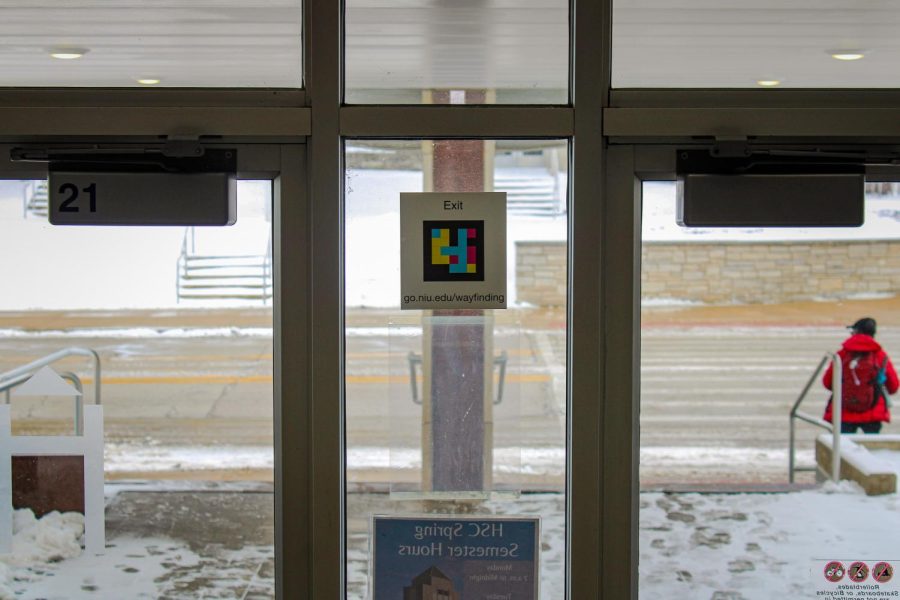NIU introduces self-navigation system
A NaviLens accessible wayfinding QR code on a door at the Normal Road entrance of Holmes Student Center. (Nyla Owens | Northern Star)
January 29, 2023
DeKALB – Colorful block QR stickers are popping up all over campus on bathrooms, stairwells and prominent buildings around NIU – but when scanned, most students won’t realize that these patterns are not meant to be seen, but heard.
NaviLens is the new app for self-navigation, able to detect special QR stickers from up to 40 feet away and audibly directs users to their locations.
Information Technology Accessibility Officer Katy Whitelaw is responsible for discovering NaviLens while she was searching for a system that would aid primarily blind or visually impaired individuals.
When the app detects a QR code, it audibly announces and displays the location’s information along with its distance. The system updates the user with commands and sound directions toward their destination.
“Using the NaviLens app can pick up these QR codes while you’re moving from many feet away, at an angle, even in low light,” Whitelaw said. “We’re using QR codes on campus more and more, and they’re great if you can see. If you can’t see them, you can’t focus your camera on them and read the code.”
The current implementation phase led to distributing about 750 QR stickers throughout major buildings in locations such as staircases, bathrooms and emergency exits. Major buildings included Founders Memorial Library, DuSable Hall and the Holmes Student Center, while other buildings with the wayfinding technology can now be identified on NIU’s online map under “Accessibility.”
“The company that created the system was looking for a solution for people who are blind and visually disabled; that was their purpose,” Whitelaw said. “It turns out that people whose first language isn’t English, people who are deaf or hard of hearing, anyone who’s in an unfamiliar building – we can all use them.”
The broader accessibility options opens NaviLens to more benefits in the form of custom stickers. Whitelaw said NIU is playing with the concept of connecting the system to the bus route which would provide regular bus updates from a custom code, similar to the NaviLens system used for the Metro system of the New York City subway.
Linda Kocjan’s job, acting director of ADA accommodations and special programs, involves regularly dealing with accessibility barriers and providing necessary accommodations to university members.
NaviLens offers a cheaper alternative to braille signage while the QR codes don’t include maintenance fees and offer the same labels for utilities.
“It’s not a cheap endeavor, but Braille signage can be anywhere from $15 to $20 a piece as well,” Kocjan said. “So, if you’re putting one of those in every room, it ends up being just as economical if not cheaper to use NaviLens.”
Whitelaw is currently looking for volunteers who can better test the program and offer improvements from the desired perspective of those who will rely on it.
“We need more individuals who are blind or visually impaired to test the codes to make sure that what we assume is a good location as a sighted person,” said Molly Pasley, a member of the Presidential Commission on Persons with Disabilities and a professor in the Visual Disabilities Program.







